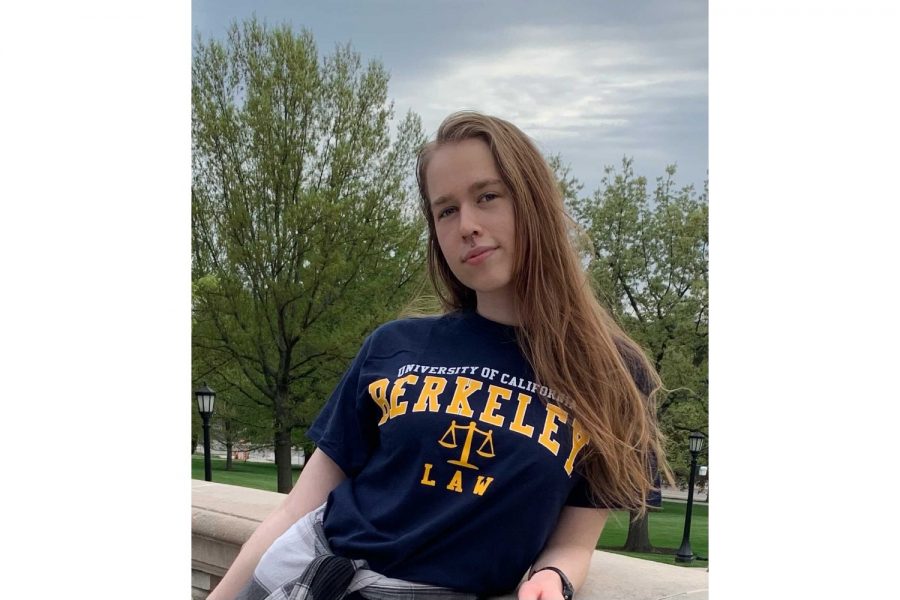Senior Column | ‘R&R’ How the pandemic shaped law school applications
More applications, higher test scores overall, and a lack of transparency from schools made this one of the most competitive application seasons ever.
May 9, 2021
As a junior in college preparing to apply to law school, I never anticipated how massively the pandemic would affect my life, particularly during this year’s law school admissions process. I’m happy to be graduating this spring and headed off to the University of California Berkeley School of Law in the fall, but my experience of this admissions cycle has shown me just how vulnerable so many of our systems are.
This year, the number of applicants for law schools jumped nearly 30 percent. In addition, each applicant submitted more applications on average than previous years.
Last cycle, when the country was just starting to feel the effects of the pandemic, many prospective law students decided to delay their applications and save them for this year. Still, others who were accepted into schools deferred their enrollment to this year, too.
All this together means more people are competing for fewer spots — and they also have less to differentiate them.
The primary factors in the law-school admissions process are a student’s undergraduate GPA, essay responses, and their Law School Admissions Test score. During the pandemic, the Law School Admissions Council, the company that administers the LSAT, canceled in-person tests.
Instead, they introduced the LSAT Flex, a shorter at-home test that uses online proctoring software. In an attempt to prevent cheating, the Flex test reduced the time applicants would spend testing by removing two sections from the typical LSAT.
The altered distribution in the types of questions testers answer makes the Flex a fundamentally different test than the regularly administered LSAT, which is scored on a curve. Scores from the Flex test were less predictable, and generated higher scores than usual, making the cycle even more competitive overall.
In response to a competitive and confusing application season, schools postponed their decisions and hedged their bets by relying increasingly on wait lists, yet still ended up over-enrolling. Based on information from LawSchoolData.org, some schools are estimated to have several thousand students on multiple tiers of wait lists but are expected to admit only 50 to 75 students from those lists.
The lack of transparency from schools also includes fluctuating timelines for students to receive information key to their decisions. Each school sets its own deadlines for applications, but schools don’t have to provide a date by which students can expect an answer. Schools’ timelines often do not match up, meaning that students may be asked to make commitments to one school, while still waiting for admissions decisions and financial aid information from others.
Students are left with a dilemma — either put down non-refundable seat deposits or lose out on opportunities while they wait for more responses. Some state schools require only a tentative intent to enroll without a deposit, while schools like George Washington University charge up to $3,000 to reserve a spot.
Schools scrambling to adapt their processes during the pandemic have in many cases passed the burden onto applicants, leaving people with even less insight to figure out how to respond. Difficult for any applicant, all these further advantage economically privileged students, while others — especially those facing financial strain during the pandemic — are struggling to keep up.
I’m lucky enough to have come out of this process with a great choice for law school, but many of my fellow applicants cannot say the same. While those accepted into the class of 2024 are gearing up for torts and property classes, plenty of this cycle’s applicants are preparing to “R and R” — retake and reapply.
Columns reflect the opinions of the authors and are not necessarily those of the Editorial Board, The Daily Iowan, or other organizations in which the author may be involved.






